Excuse me! The problem with methane
Expert reviewers
Essentials
- Methane is the second-most prevelent greenhouse gas, and plays an important part in global warming
- Methane can come from many sources. It is produced naturally in the environment, by livestock, and as a result of human activity
- Methane created by human activity can be ‘trapped’ and used to produce energy, such as electricity
- Finding ways of reducing or reusing the methane produced by human activity is an important step in managing climate change
When it comes to greenhouse gases, the headlines tend to focus on carbon dioxide (CO2). Yet there is another gas that, despite its relatively low public profile, plays a key role in climate change. Methane (CH4) is responsible for about one-fifth of the enhanced greenhouse effect. Despite its prevalence in the atmosphere, there are still many unknowns about methane, and scientists don’t always agree on what affects its levels in the atmosphere.
What is methane?
Methane is lighter than air, colourless and, despite what you might think considering animals burp it out, odourless. It is a truly universal gas: it occurs naturally in the environment, it’s made by animals, and it can be released as a result of human activities such as agriculture, fossil fuel production and rotting landfill.
Chemically, methane is a compound made up of one atom of carbon and four atoms of hydrogen (CH4). It is the main component of natural gas.
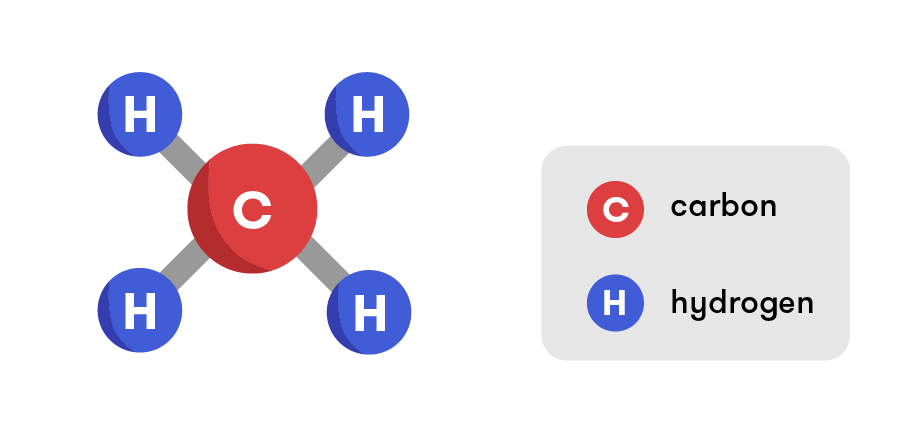
Methane (CH4) molecules have four hydrogen atoms and a central carbon atom.
Methane in the atmosphere
There is much more CO2 than methane in Earth’s atmosphere. However, methane’s global warming potential (GWP)—its warming potency compared to CO2—is around 30. That means it’s 30 times more effective at trapping heat in the atmosphere than CO2 over a 100-year period. So, over 100 years, adding one molecule of methane to the atmosphere would have the same effect as adding 30 molecules of CO2.
Whether atmospheric methane concentrations increase or decrease depends on the balance between the human and natural sources on one hand and the natural sinks GLOSSARY natural sinksMost natural sinks occur as a result of chemical reactions in the atmosphere as well as oxidation by methane consuming bacteria in Earth’s soils. on the other.
While for CO2 this balance has been positive for many decades, producing an inexorable increase, methane’s story is more complicated.
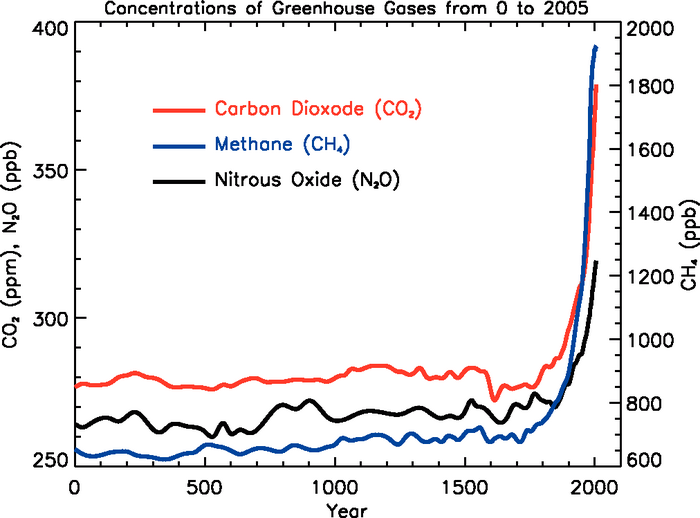
Atmospheric concentrations of carbon dioxide, methane and nitrous oxide in the atmosphere sharply increased after human industrial activity began. Source: Intergovernmental Panel on Climate Change.
Since the industrial revolution (from around 1750), there has been a 250 per cent increase in the amount of methane in the atmosphere. Methane levels in the pre-industrial era were some 715 parts per billion (ppb). Following a steady increase up to the year 2000, concentrations stabilised, hardly increasing at all between around 2000 and 2006, probably due to a reduction in fossil fuel emissions. Now they have begun to rise again. Tropical wetlands, Arctic permafrost GLOSSARY permafrosta thick subsurface layer of soil that remains below freezing point throughout the year, occurring chiefly in polar regions and the expansion in the global gas industry have all been suggested as sources for the methane increase, but no single cause has been conclusively identified.
In 2014, atmospheric methane stood at around 1,800 parts per billion. Ice core samples show that current levels are the highest in the past 650,000 years.
Luckily, methane lingers in the atmosphere for only about 10 years, compared to up to 200 years for CO2. While this sounds like good news, the methane eventually transforms into CO2 so ultimately just adds more CO2 to the atmosphere. Reducing methane emissions is a tempting target for combatting climate change but, like CO2, controlling atmospheric methane is a complex task.
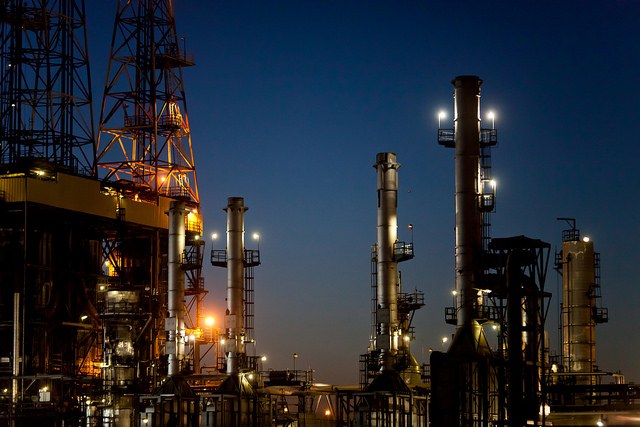
Our industrial processes release methane into the atmosphere, but that's not the only source of this greenhouse gas. Image source: Thomas Hawk / Flickr.
Sources of methane
Methane can come from many sources. It is produced naturally in the environment, by animals, and as a result of human activity.
Let’s take a closer look.
Natural sources
The most prominent natural source of methane is wetlands, hence its name ‘marsh gas’. It is produced when plants and other organic matter decompose in the absence of oxygen (anaerobically), such as when they are under water. This anaerobic decomposition by microorganisms (called methanogens) takes place in wetlands, swamps and marshes and is estimated to produce up to 70 per cent of the natural methane in the atmosphere. Maximum methane production is found at temperatures between 37 and 45°C, meaning an increase in global temperature may also increase methane production in wetlands.
Our oceans contribute approximately 2 per cent of global methane emissions. Methane is produced by some types of microbes that live in the digestive tracts (and then faecal pellets) of zooplankton that live in the ocean.
Another source of methane that’s causing concern is the vast amount locked away under the oceans and within the Arctic permafrost. Under very low temperatures, and/or high pressures, methane gas combines with water to form a solid structure known as a methane clathrate (also known as methane hydrate, methane ice, or natural gas hydrate). The methane is trapped within the crystal structure of frozen water.
This ‘frozen’ methane underground is not a problem—if it stays trapped there. Under low temperature conditions, and/or high pressure conditions, the methane clathrates remain stable. However, due to human activity, global temperatures are changing rapidly, causing the permafrost to thaw and the oceans to warm up. This will be a slow process but, once it starts, will be hard to stop and has the potential to release huge amounts of methane into the atmosphere.
There have been recent observations of high concentrations of methane in the Alaskan atmosphere, and in 2014 a number of mysterious craters were found in Siberia and the permafrost of northern Russia. While the exact cause of the craters has not been conclusively proven, one theory is that warming temperatures due to climate change have released the methane trapped in the permafrost, resulting in a sort of mini-volcano explosion that leaves behind the giant craters, while releasing tonnes of methane into the air.
Another theory suggests that the craters are a result of the rapid melting of ice cores called pingos. A pingo, also known as a hydrolaccolith, is a ‘plug’ of ice that develops on the surface with a small mound or hill of earth on top. They can reach up to 70m in height and 600m in diameter. If the ice plug melts rapidly, this can cause the ground to collapse, resulting in a crater. However this theory does not explain the ejected rocks and evidence of explosion that surround the craters. Instead, it could be that the craters were formed by stored natural gas that was suddenly released from the permafrost due to the melting of the pingo. Carolyn Ruppel, chief of the U.S Geological Survey’s Gas Hydrates Project supports the pingo theory over methane release. She noted that “generic methane hydrates in permafrost are normally not stable above about 200 meters depth. The craters are far shallower than that, so tapping in to dissociating methane hydrate is probably unlikely” (source: EarthSky).
Observations do not go back far enough to tell if these craters are new phenomena but they are being watched closely, with studies continuing to determine their cause and frequency.
From giant craters to tiny insects, methane is also produced in the gut of termites. This accounts for around 5 per cent of global emissions.
Methane from human-related activities
Methane emissions as a result of human activity are currently at around 320 million tonnes per year, far exceeding the levels from natural sources (250 million tonnes).
Fossil fuel industries are the main contributors to global methane emissions. Methane is released in to the atmosphere during the extraction of fossil fuels such as oil, coal and gas, as well as from natural gas pipelines.
Methane is also produced at landfills or rubbish tips, as organic rubbish decomposes underground in the absence of oxygen.
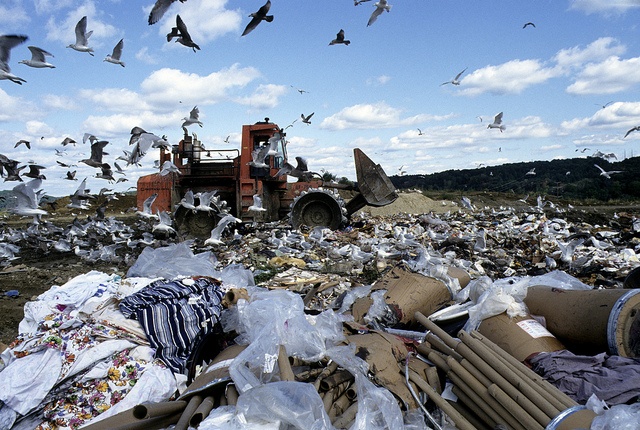
Methane is produced at landfills as rubbish decomposes underground. Image source: United Nations Photo / Flickr.
Similarly, methane can be created in oxygen-free systems involving manure or sewage treatment. But rather than releasing it into the atmosphere, this methane can be put to good use. In Melbourne, for instance, the wastewater treatment plant at Weeribee collects methane from its ponds. Some ponds collect up to 20,000 cubic metres of methane a day, which is then used to generate electricity to help power the treatment plant.
In our homes, methane is quite common—the natural gas that many of us cook and heat our homes with, is around 85 per cent methane.
In rural areas, methane is also produced as a result of the burning of biomass such as agricultural wastes, grasslands and forests (for land clearing). Rice paddies, which are covered by water for several months of the year, act like wetlands and produce 10 per cent of methane emissions.
Livestock
Burps and flatulence may be a source of mirth for children, but when produced en mass by livestock the methane they release can become a serious problem. Methane is produced by a process called enteric fermentation in the digestive system of domestic ruminant animals such as cattle, goats and sheep. These animals burp and, to a lesser extent, fart the methane into the atmosphere. Researchers at New Zealand’s largest Crown Research Institute, AGResearch, found that regardless of which end it comes out, each cow produces between 130 and 230 litres of methane per day. Considering there are more than 1.3 billion cows on the planet, this adds up fast, making it no surprise that livestock are a large source of methane, producing around 28 per cent of global emissions.
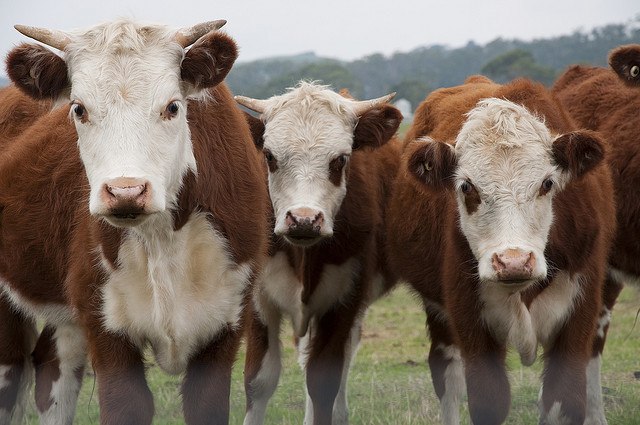
Livestock create around 28 per cent of global methane emissions, due to a process in the digestive system of ruminants such as cattle, goats and sheep. Image source: JenniKate Wallace / Flickr.
Methane removal
The removal of methane from the atmosphere can be undertaken via natural environmental processes as well as through man-made innovation.
Natural methane sinks
Prior to the industrial revolution, global methane levels were relatively stable for a long time because the total methane produced was being offset by natural methane removal methods, known as methane ‘sinks’. Methane emissions have now overtaken removals by around 22 megatonnes (Mt) per year.
The most important sink for methane is the troposphere (the lowest level of Earth’s atmosphere). Here, the hydroxyl radical (OH) acts as a ‘cleansing’ agent through its reactions with methane and other gases, effectively removing them from the atmosphere. This tropospheric oxidation removes over 500 Mt of methane per year.
Smaller amounts of methane (40 Mt) are also removed from the next atmospheric layer up—the stratosphere—again due to reactions with OH.

Our atmosphere naturally removes methane through chemical processes, but not enough to keep levels stable. Image source: Shemsu.Hor / Flickr.
Some microorganisms (methanotrophs) found in soils use methane as a source of carbon, removing around 30 Mt of methane each year.
Using science to reduce methane levels
While the natural environment has its own mechanisms for removing methane from the atmosphere, advances in science and technology are helping us play our part too.
Finding different ways to grow rice—such as dry rice farming—or developing more productive rice varieties could be a more effective method of reducing methane levels.
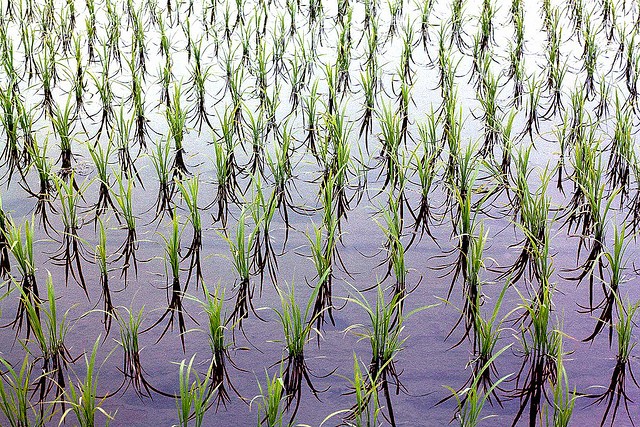
Rice fields and livestock are some of our biggest emitters of methane. We have an opportunty to change our practices and reduce our emissions. Image source: Pockafwye / Flickr.
With a growing population needing meat, milk, wool and all the other resources farm animals give us, there is little chance of drastically cutting the number of ruminant animals on the planet, unless we find alternative sources of animal protein or all suddenly decide to become vegan—an unlikely scenario.
However, Australian scientists are tackling livestock emissions. In early 2009, the Australian Government committed nearly $27 million to research ways of reducing methane and other greenhouse gases arising from agriculture. The research involves 18 projects, including selectively breeding livestock that produce less methane; reducing methane emissions by eliminating certain livestock gut microbes; and reducing methane emissions by changing the diet of livestock.
Technology also means that we don’t have to put our ‘waste’ to waste. Because methane can be used as a fuel, there are several possibilities for recycling the gas and using it as a source of energy. Although this might produce some carbon dioxide, the overall contribution to climate change would be less than if the methane wasn’t used. For years, methane produced by decomposing matter at some rubbish tips or landfill sites has been tapped as a source of gas, and used to produce electricity, heat buildings and power vehicles.
The United States already operates more than 500 landfill-to-energy projects, while Germany, always a leader in renewable technologies, produced enough electricity from biogas GLOSSARY biogasBiogas typically refers to a mixture of different gases produced by the breakdown of organic matter in the absence of oxygen. Biogas can be produced from raw materials such as agricultural waste, manure, municipal waste, plant material, sewage, green waste or food waste. in 2009 to power over 3.5 million homes. Since 2005 Sweden has been using this technology to power a train, which runs between two cities over 120 km apart.
If in some places it isn’t feasible to use the methane created by landfills, another solution being researched in Australia is to stop it forming in the first place. One way to prevent methane being made at landfill sites is to cover the site to stop rain penetrating into the ground. Australian scientists are now looking at reducing methane levels at rubbish tips by growing plants and trees on their surface. The idea is for the plants to take up the water that would otherwise seep down and promote the anaerobic decomposition of rubbish, which produces methane. This method—known as phytocapping—has been tested successfully by researchers at Central Queensland University.
Methane capture and reuse is a commercial renewable energy technology, widely used in the sewage treatment industry. The Werribee Treatment Plant mentioned earlier, and farms such as the Straus Family Creamery, which uses a methane digester to turn its cow manure into energy, are proof that capture and reuse technologies are viable and effective.
Yet another way to reduce methane levels is to lower emissions from fossil fuel industries. For instance, methane can be collected from some coal mines for energy production—in effect, turning a waste gas into a fuel.
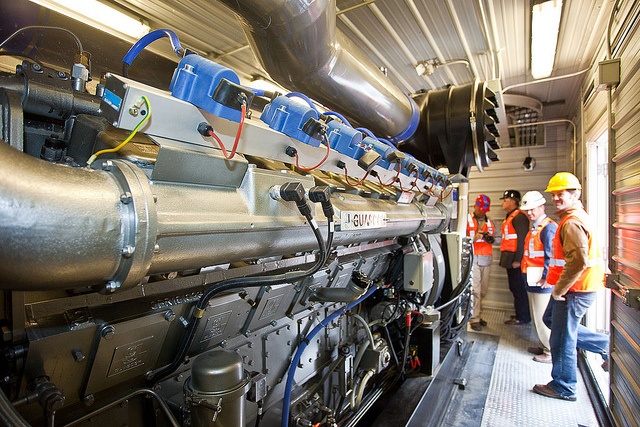
A methane capturing system in the US that captures methane from a coal mine and converts it to eletricity. Image source: Aspen Snowmass / Flickr.
Importantly, governments are now recognising the role of methane as a greenhouse gas. Methane was included in Australia’s emissions trading scheme and the current Emissions Reduction Fund. The European Union is also looking to include methane and other greenhouse gases in its Emissions Trading Scheme.
Conclusion
From the burps of cows, to the decomposition of organic matter, to the vast repositories of frozen clathrates in the oceans and permafrost, methane is ubiquitous. Its potency as a greenhouse gas makes it a serious player in influencing the way Earth’s systems are responding to anthropogenic GLOSSARY anthropogenicchiefly of environmental pollution and pollutants originating from human activity greenhouse emissions. Finding ways of reducing or reusing the methane produced by human activity is an important step in managing climate change.

